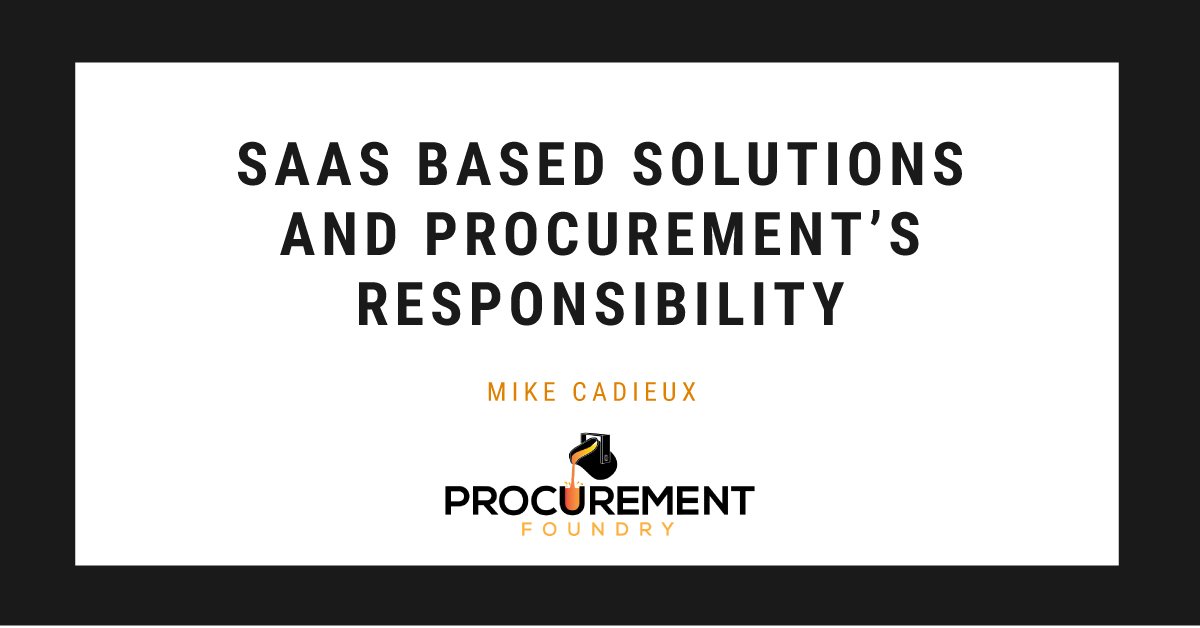Maximizing Savings Opportunities and Procurement's Strategic Value for CPOs
Saving money is not always about pinching pennies: advanced and data-driven insights enable you to identify real cost-saving opportunities, negotiate...

No one ever got fired for buying IBM.
For those of you under 40 years of age, the above phrase is unlikely to inspire any real thought beyond a question mark, so perhaps an explanation would be in order.
With the advent of the desktop computer – which most company IT people said was a fad at the time, and would soon pass like the hula hoop and television rabbit ears, we were on the cusp of a major breakthrough.
Ironically, and similar to where we are today with digital transformation, there was a reluctance to embrace the inevitable – being that the PC was here to stay. Think about this statement for a moment. People were reluctant to accept the PC even though it put the computing power of a large mainframe on the desk of an employee. Today, reservations like these seem ridiculous.
Of course, I think the real problem wasn’t with the PC technology, but the fact that people were looking at how difficult it was to implement and manage rows and rows of IBM mainframe computers. The time and staff to oversee the operation of these now antiquated behemoths made it challenging to accept that such a small device could do the same work for relative pennies.
It was this disbelief I am sure was, at least in part, the basis for the “no one ever got fired for buying IBM” refrain.
Before SaaS and what Gartner eventually would call the postmodern ERP era, Enterprise Resource Planning applications were very much like the lumbering old mainframes of yesteryear. When I say lumbering, I am especially referring to the eProcurement functionality within the ERP platform.
Everything from supplier onboarding, to RFPs and purchase orders, through to invoicing was a disjointed chain that was confusing to all but a handful of IT people. From a buyer (user) interface standpoint, it would have been easier to write the code for the Mars rover landing than using these systems.
Besides implementations taking years to complete at the cost of millions of dollars, the rate of initiative failure was as high as 85 percent. So, when on-demand or SaaS solutions came on the scene, is it any wonder they were “viewed” with the same disdain and skepticism that first greeted the PC?
After all, how could a SaaS solution be up and operational within weeks, if not days, at a fraction of the cost of an ERP platform’s procurement offering? You see the parallel.
You can also understand why there is a persistent ERP-induced mindset regarding the need to self-insure against SaaS suppliers. The question is against what liability or liabilities are you insuring?
With the “Amazonization” of the buying process, the ease and comfort with technology is no longer an issue – or it shouldn’t be.
Regardless of the SaaS provider with whom you choose to partner, the technology is going to work. The challenge, and I believe the responsibility for a successful implementation ultimately rests on the shoulders of the procurement department. In other words, you must take the lead to ensure your success versus abdicating it to someone else.
I can think of no better way to self-insure than owning your outcomes – can you?

Saving money is not always about pinching pennies: advanced and data-driven insights enable you to identify real cost-saving opportunities, negotiate...

The topic of our recent roundtable discussion with a dozen Procurement Foundry community members—exploring potential flaws in procurement incentive...

Every 30 days or so, I get the same alert on my phone—“Your electricity bill is available for viewing.” I take a quick look, make sure nothing seems...